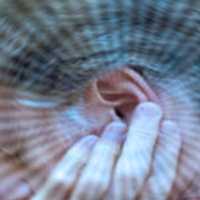
About 360 million people, or more than 5 percent of the global population, have disabling hearing loss, according to the World Health Organization.
Almost 50 million Americans have hearing loss, including one in five teens and about 47 percent of adults aged 75 or older. Additionally, about 60 percent of veterans return from Iraq and Afghanistan with hearing loss and tinnitus.
Hearing loss simulators like Starkey’s are becoming available online, including one from the Hear the World Foundation and a video from the House Ear Institute. These simulators portray hearing loss for parents, partners and friends of those with hearing damage.
However, questions arise as to whether these simulators are the most accurate or best way to communicate hearing loss to those who hear normally.
A specialist in the perception of sound and leader of the Auditory Perception Group at the University of Cambridge, Dr. Brian Moore believes that these simulators are the best we have at the moment. Moore researched how the auditory system works, the relationship between our perceptions and sound stimuli, and the changes in perception that hearing loss sufferers experience.
Moore published Perceptual Consequences of Cochlear Damage in 1995 with an audio CD that included eight hearing loss simulation demos. Moore and his colleagues have modified the demos with minor tweaks over the past 19 years.
“We know that these simulations aren’t perfect, but they give a reasonable idea,” Moore told Mashable.
His research team has evaluated these simulations by testing patients with hearing loss in only one ear. The researchers played a sound through the impaired ear then processed the same sound to simulate the hearing loss of the impaired ears and presented the sound to the good ears. Most patients reported that the sounds matched pretty well, according to Moore.
However, the process isn’t simply trial and error. The researchers base simulations on measurements of two aspects of hearing damage: loudness recruitment and reduced frequency selectivity. Loudness recruitment is the ability to detect high levels of sound normally but not low levels. Reduced frequency selectivity occurs when the ear can’t perceive different frequencies in complex sounds, like music or overlapping speech.
Measuring one’s sound detection threshold, or the lowest sounds one can perceive, helps researchers process the simulation with nearly accurate results.
“Though the simulation doesn’t sound very nice to people with normal hearing, it’s actually not quite as bad as what the hearing-impaired person is experiencing,” Moore explained to Mashable. “So, there’s some other dimension that we’re missing in these simulations. We’re getting close but we’re not quite there.”
Moore and his team have also created simulations of hearing through a cochlear implant.
“Cochlear implants are devices usually given only to people with severe or profound hearing loss, who don’t get much benefit from a hearing aid,” Moore told Mashable. “They are increasingly being used in very young children.”
Nonetheless, there’s certainly room for improvement with cochlear implants, as they tend to pick up speech but not frequencies in complex sounds like music.
Moore believes that hearing loss simulations can both give parents, spouses and friends insight into what hearing loss sufferers experience and encourage teenagers to take care of their hearing.
“They should take steps to protect their hearing if they’re at a very loud concert,” Moore told Mashable. “Demonstrations of what it’s like to have hearing loss can be effective in persuading people about that. It’s by no means perfect. But we’re fairly confident we’re on the right lines.”
If you or someone you know would like to learn more about hearing loss and how to treat it, please feel free to schedule a consultation or contact one of our representatives today!
Call 877-631-9511 for FREE Consultation



